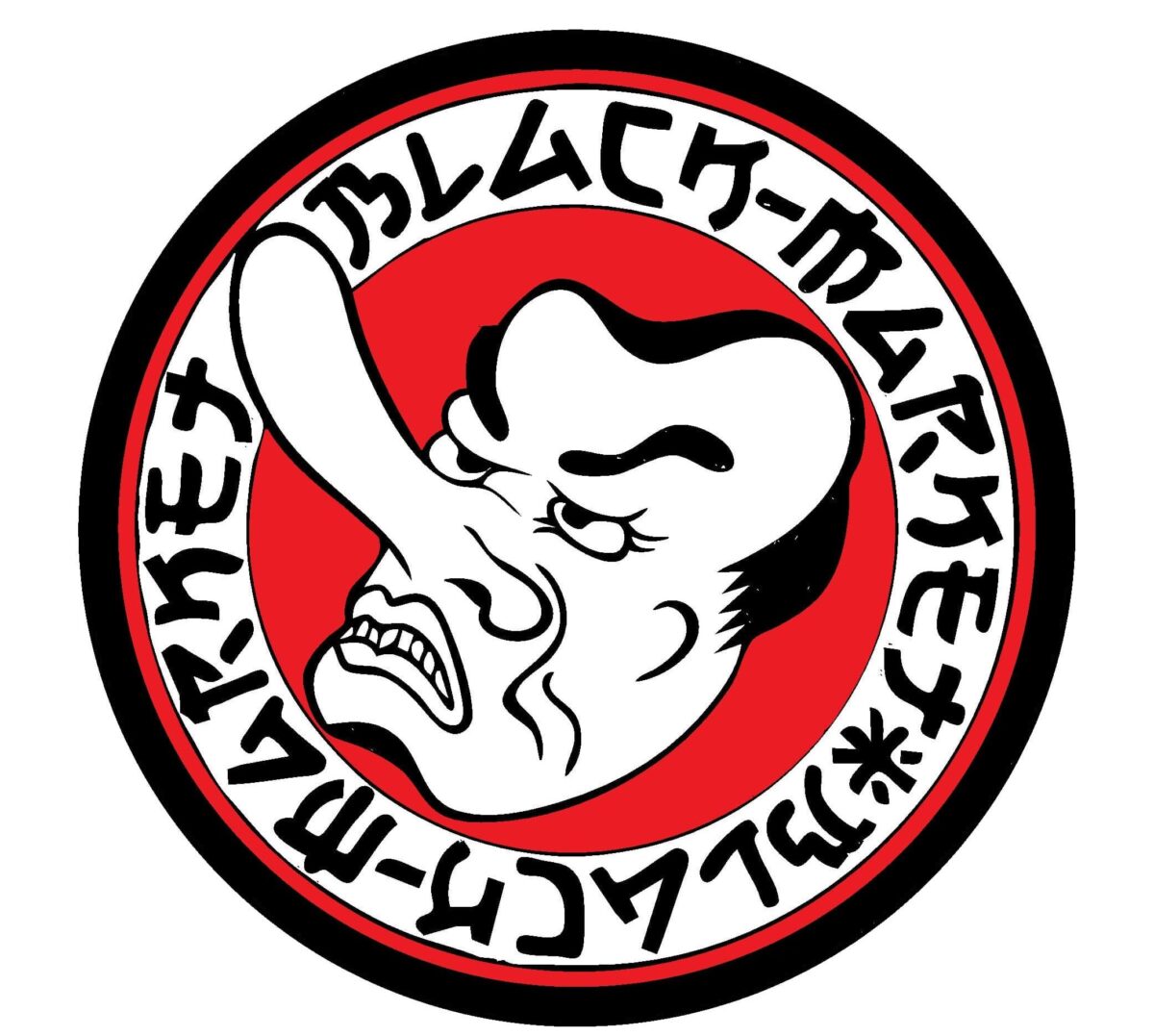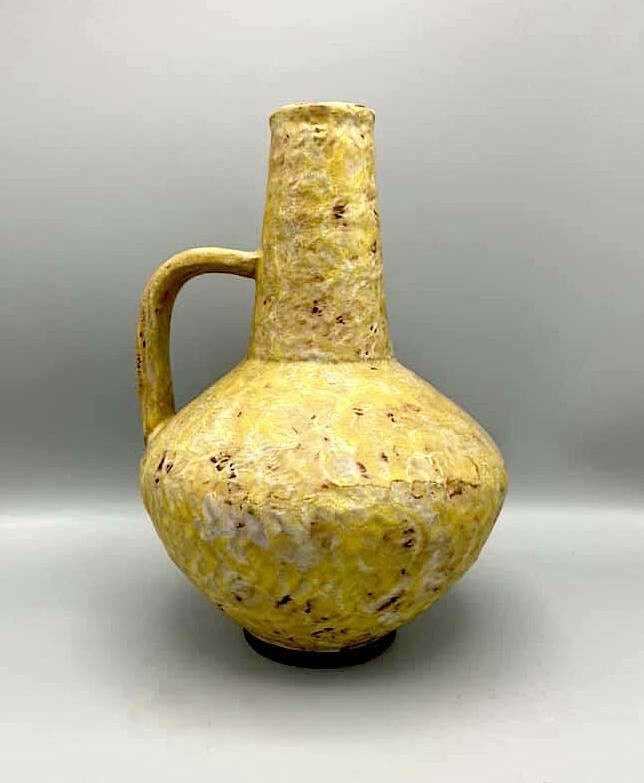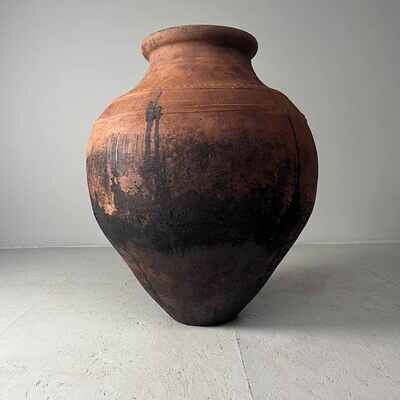CARSTENS TÖNNIESHOF KRUIK VAAS Model 201
Een grote Carstens kruikvaas uit de Atelier-serie
Geproduceerd van begin tot midden jaren 60.
Deze vorm is een klassieker van Heinz Siery.
Modelnummer van deze vaas is 201.
Hoogte: 27 cm
Doorsnede: 19 cm
De kruik vaas is in perfecte staat en is nog voorzien van de originele zelfklever.
HEINZ SIERY was a true luminary in the world of ceramics in the 1950s and '60s. His form designs had significant impact on the product styles of makers Fohr, SCHEURICH, Carstens, and Ruscha, among others. Siery often employed "the golden ratio" (or an approximation) while designing, lending harmonious proportion to his work. This can be clearly seen in his most iconic vase, no. 271/22 for SCHEURICH. Presented in 1959, it was extremely popular and was still being manufactured in the 1970s. Siery also developed and introduced new methods of industrial organization.
CARSTENS TÖNNIESHOF was founded in 1946 by Ernst Carstens and his son Christian. Their family had had a long prior history of manufacturing ceramics and porcelain in Germany, but all of its businesses had collapsed by the end of WWII. Most of the CARSTENS factories wound up on East German soil when the country was divided and so were expropriated by the DDR. Father and son built the new Tönnieshof factory on a farm of that name in Fredelsloh in Lower Saxony, just west of the border with East Germany. Production of table ceramics began in 1947; the first known decorative pieces date from the early '50s. Ernst's wife Trude Carstens served as artistic director until her death in 1965.
CARSTENS TÖNNIESHOF was very successful for many years and produced an enormous variety of shapes and glazes. The 'Luxus' and 'Atelier' ranges were more expensive lines and they sold in large department stores—'Atelier,' launched in 1962, was the creation of renowned designer Gerda Heuckeroth. Helmut Scholtis introduced the very popular 'Ankara' décor in 1963 during a stint with CARSTENS; an example of the "wax resist" technique, it was applied to a broad array of forms. Lava glazes were employed during the second half of the 1960s. Production was eventually expanded abroad to Austria, Chile, Argentina, and Australia—it may well have topped out at close to 10,000 items daily. Other distinguished designers on CARSTENS' roster included Heinz Siery, Rudolph Christmann, and Dieter Peter. The firm went bankrupt in 1977.













